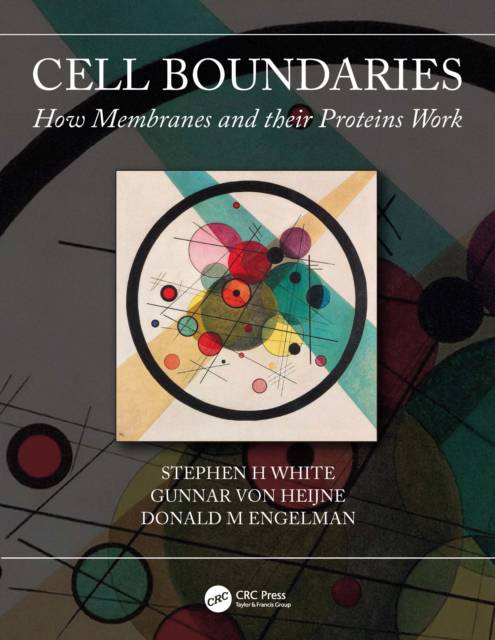
- Afhalen na 1 uur in een winkel met voorraad
- Gratis thuislevering in België vanaf € 30
- Ruim aanbod met 7 miljoen producten
- Afhalen na 1 uur in een winkel met voorraad
- Gratis thuislevering in België vanaf € 30
- Ruim aanbod met 7 miljoen producten
Cell Boundaries
How Membranes and Their Proteins Work
Stephen White, Gunnar Von Heijne, Donald EngelmanOmschrijving
The central themes of Cell Boundaries concern the structural and organizational principles underlying cell membranes, and how these principles enable function. By building a biological and biophysical foundation for understanding the organization of lipids in bilayers and the folding, assembly, stability, and function of membrane proteins, the book aims to broaden the knowledge of bioscience students to include the basic physics and physical chemistry that inform us about membranes. In doing so, it is hoped that physics students will find familiar territory that will lead them to an interest in biology. Our progress toward understanding membranes and membrane proteins depends strongly upon the concerted use of both biology and physics. It is important for students to know not only what we know, but how we have come to know it, so Cell Boundaries endeavours to bring out the history behind the central discoveries, especially in the early chapters, where the foundation is laid for later chapters. Science is far more interesting if, as students, we can appreciate and share in the adventures--and misadventures--of discovering new scientific knowledge.
Cell Boundaries was written with advanced undergraduates and beginning graduate students in the biological and physical sciences in mind, though this textbook will likely have appeal to researchers and other academics as well.
- Highlights the history of important central discoveries
- Early chapters lay the foundation for later chapters to build on, so knowledge is amassed
- High-quality line diagrams illustrate key concepts and illuminate molecular mechanisms
- Box features and spreads expand on topics in main text, including histories of discoveries, special techniques, and applications
Specificaties
Betrokkenen
- Auteur(s):
- Uitgeverij:
Inhoud
- Aantal bladzijden:
- 546
- Taal:
- Engels
Eigenschappen
- Productcode (EAN):
- 9780815342168
- Verschijningsdatum:
- 31/12/2021
- Uitvoering:
- Hardcover
- Formaat:
- Genaaid
- Afmetingen:
- 210 mm x 279 mm
- Gewicht:
- 4526 g

Alleen bij Standaard Boekhandel
Beoordelingen
We publiceren alleen reviews die voldoen aan de voorwaarden voor reviews. Bekijk onze voorwaarden voor reviews.












